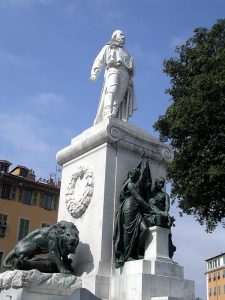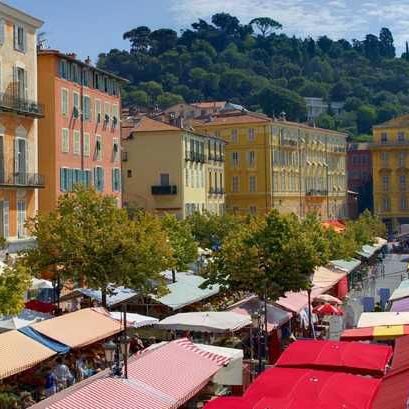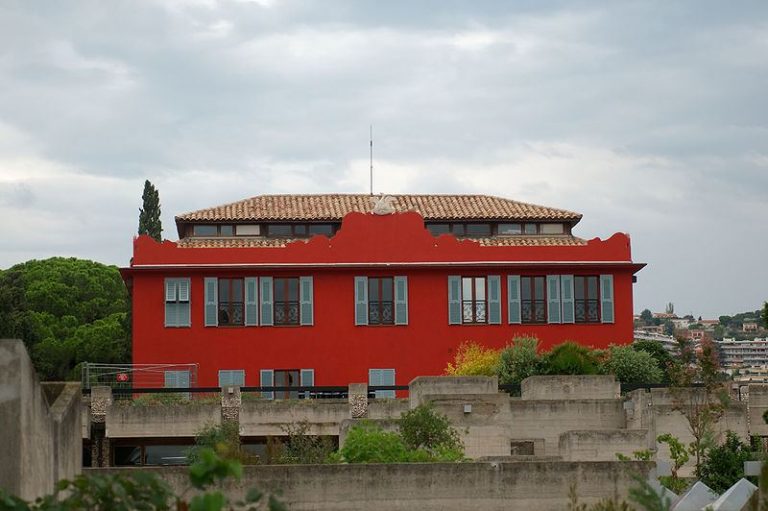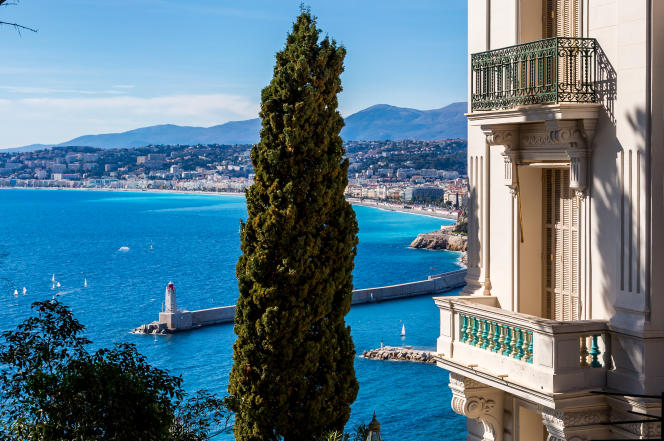Nice, history and heritage
You dream of spending a sunny holiday, under an azure sky, with a Mediterranean climate, in a setting where historical charm and modern architecture coexist harmoniously, Nice is your ideal destination.
Nice is full of historical monuments and other tourist attractions. It is a city rich in discoveries. And each discovery is a fully lived experience – and why not renewed! Every street carries with it a piece of its past. Each building tells a chapter of its history. And the whole city testifies through its architecture of these multiple and different eras that make up its identity. And its singularity. Nice is a city to visit, a heritage to discover and a history to know.
Staying at the Campanile Nice Centre Acropolis hotel, you will be at the heart of this experience and can renew your discoveries at leisure.
Which destination to choose?
Capital of the department of the Alpes-Maritimes on the Côte d’Azur, it is located on the pebble coast of the Baie des Anges. Nice, the 5th largest city in France and an international tourist hub, is a modern and active regional capital that has preserved its way of life over the centuries. It is renowned for its rich and intense history. If you want to know it, go there to spend an unforgettable holiday full of discoveries. And in emotions. You will not regret it.
To take full advantage of its lifestyle and heritage, the Campanile Nice Centre Acropolis hotel offers you a modern and comfortable base, just a stone’s throw from the Baie des Anges.
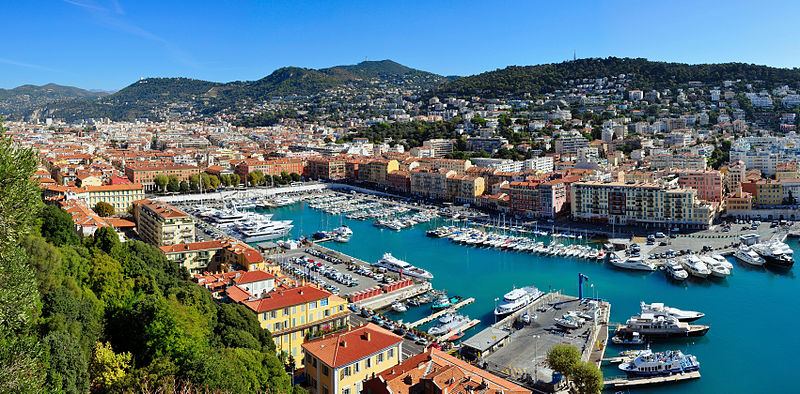
Why Nice?
Nice, whose backdrop is the deep blue of the waters of the Côte d’Azur, has the charm of the Mediterranean cities where the sweetness of life is as much due to the beauty of the city as to its exceptional climate. Even in winter, the café terraces are pleasant. Nice, both elegant and popular, has many advantages. It has many monuments and cultural structures that testify to an extremely rich and varied historical past. Go and discover each of its neighborhoods, each of its alleys. As you walk, immerse yourself in its past, you will discover its architecture that highlights the particular evolution of its history.
Staying at the Hotel Campanile Nice Centre Acropolis, you will have easy access to the historical districts and museums, while enjoying contemporary comfort.
What to visit in Nice?
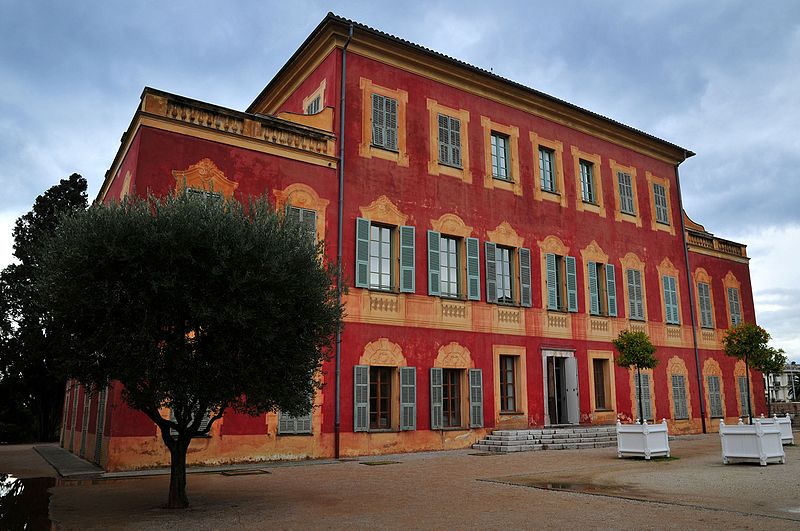
- The Henri Matisse Museum is dedicated to the artistic career of the painter from Nice. Housed in the Villa des Arènes, a 13th-century Genoese villa in the Cimiez district located at 164, avenue des Arènes de Cimiez, it houses one of the most important world collections of his works, which allows us to retrace his artistic career and its evolution from his beginnings to his last works.
- The Marc Chagall Museum, located at 36, avenue Dr Ménard, is a monographic and thematic museum. It brings together in a single place some of the artist’s greatest religious works.
- The Museum of Modern and Contemporary Art, also called MAMAC, is a museum dedicated to modern art and contemporary art. The museum in Place Yves Klein has an important collection of paintings, sculptures and installations. It offers an avant-garde panorama of artistic creation from the late 1950s to the present day, articulated around different movements.
- The Musée des beaux-arts Jules Chéret, 33, avenue des Baumettes, has an important collection of the painter and poster artist Jules Chéret. It also presents an important collection of works that covers the entire history of art from the 16th to the 20th century.
- The Archaeological Museum of Cimiez, 160, avenue des Arènes de Cimiez , is a museum dedicated to ancient history. The museum collects many ceramics and other ancient objects and utensils of the great Mediterranean civilizations. It presents archaeological evidence of the ancient history of Nice and its surroundings.
- The Terra Amata Museum of Human Paleontology, 25 Carnot Boulevard, is a museum dedicated to the prehistoric site of Terra Amata – an open-air prehistoric site located on the slopes of Mount Boron. It offers a journey into the prehistoric past of Nice.
- The Musée international d’art naïf Anatole Jakovsky is a museum located in Nice at 06200, which presents works of naive art from the 17th to the 20th century.
- The Charles Nègre Photography Museum, located in the heart of Old Nice at 1 Place Pierre Gautier, offers temporary monographic exhibitions of the greatest names in photography, or thematic presenting all trends, from old photography to digital image.
- The Nice Natural History Museum, known to the people of Nice as the Barla Museum, has a rich heritage of more than one million specimens, mainly from the Mediterranean regions but also from South America, Africa and the islands of the Indian Ocean. It is located in the area of Place Garibaldi, at 60 Boulevard Risso.
- The National Museum of Sport, located at the Allianz Riviera stadium on boulevard des Jardiniers, is a museum dedicated to the history of modern sport. It presents a large collection of objects from the 16th century to today.
- The Museum of Asian Arts, 405 Promenade des Anglais, is a museum located in Phoenix Park and houses collections of Asian art.
- The Franciscan Museum, 2 Place du Monastère, evokes through documents and works the Franciscan life in Nice from the 13th century to today.
Old Nice
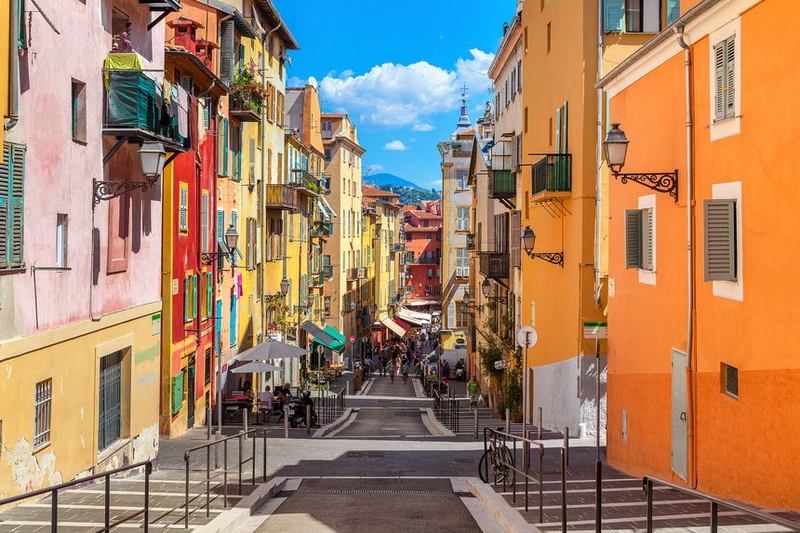
A walk in the Old Nice is a must. It is the old and lively part – day or night – of the city. It is the heart of the city, its soul and spirit. There is a real village atmosphere. From one alley to another, cobbled and picturesque, you will discover its buildings with ochre facades declined in yellow or red, others in pastel tones. You will also discover its shops selling Nice soap, Provencal textiles, meat and cheese… You will also find artisan food shops of all kinds: fresh pasta factories, Nice dishes, butchers, bakeries, grocery stores but also countless restaurants, cafes, bars, glaciers… You will also find other shops of a different kind: boutiques of artists painters, designers, sculptors, designers of clothes or jewelry, and many interior decoration shops.
From the Hotel Campanile Nice Centre Acropolis, take less than 10 minutes on foot to reach this unique atmosphere.
In old Nice, other discoveries await you
Old Nice is more than just a neighbourhood. It’s an open-air museum. Its architecture reflects the diversity and richness of its material heritage.
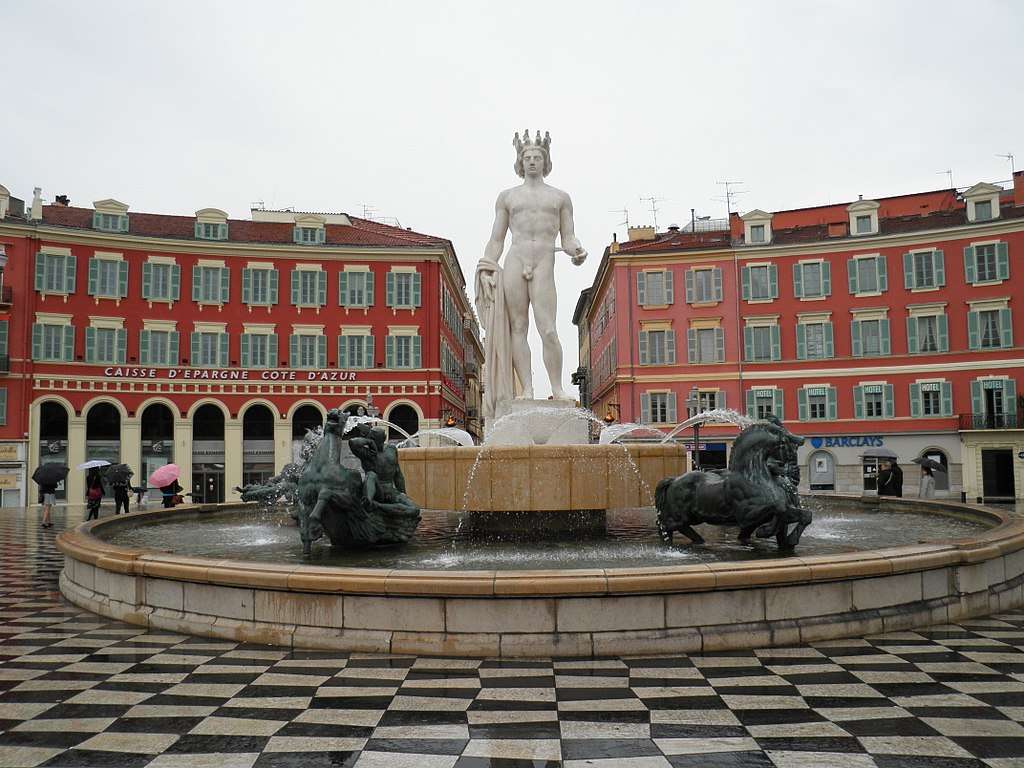
Walking there, you marvel at the place Masséna where is the «fountain of the sun». On this fountain are five bronze statues. They all represent characters from Greco-Roman mythology: the Earth, Mars, Venus, Mercury and Saturn. There is a marble statue of Apollo at the center of the fountain, seven meters high. The square also has seven scribes statutioned in white resin, about ten meters above the ground. A curiosity not to be missed!
When you enter the old part of Nice, you will not be insensitive in front of the Opera, built in 1855 on the site of an old theatre. An architecture to delight.
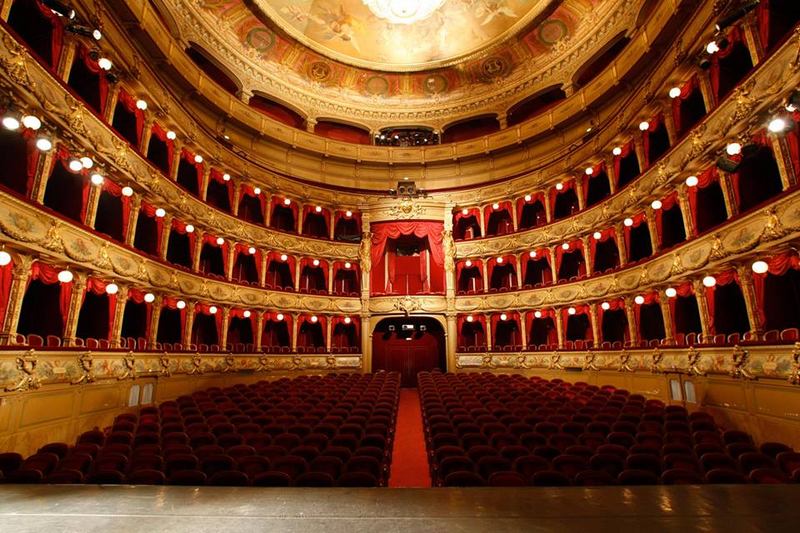
The walk will then take you to the Cours Saleya which is a pedestrian esplanade and a colorful place with its food and floral markets. You can also find souvenirs, antiques or flea markets.
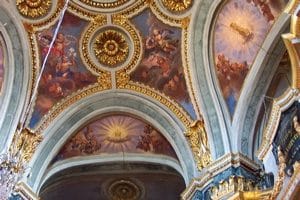
You will also find a few churches, including the church of Saint Giaume, one of the oldest churches in the city, built on a chapel that dates from 900; the Jesuit church known as the “Gésu”, Built in 1607; or the baroque church of the Black Penitents, built between 1747 and 1770 and considered the masterpiece of Niçois baroque.
There is also the Cathedral which was built in 1649. Its baroque facade and its dome with glazed tiles face the Place Rossetti which is the most central square of Old Nice.
The Palazzo Lascaris, a Genoese-style residence built in 1648, now houses the museum of musical instruments.
Continuing the walk, you will arrive at Place Saint-François where the fish market is held.
Before arriving at Place Garibaldi, admire the pretty clock tower which is the only vestige of an old convent. And once you arrive at Garibaldi Square, enjoy it fully. It is considered the most beautiful square of the city: it is square, surrounded by arcades that house shops. The southern part houses the chapel of the Holy Sepulchre known as the white penitents. The center of the square is occupied by a statue of Garibaldi.
The visit continues to the castle. Built in the 12th century, it overlooks the bay. Once a military site, the place is now known as park and garden. It is appreciated for the freshness of its undergrowth and its surprising waterfall. It is a place for walks and offers a remarkable view of the Bay of Angels, the old town and the port.
Be careful!
Do not enter the Old Nice by car. The area can only be visited on foot or on two wheels. If you have come by car, park your vehicle in one of the underground car parks. If you are cycling, park it either on the Cours Saleya or on the square of the Palais de Justice.
The must-sees
One of the unmissable places to visit in Nice is undoubtedly the Promenade des Anglais, symbol of the city. Along the seafront, it is the favorite place for tourists and joggers. It is also a meeting place for all roller skating enthusiasts. It is the ideal place for walking and contemplating the Bay of Angels.
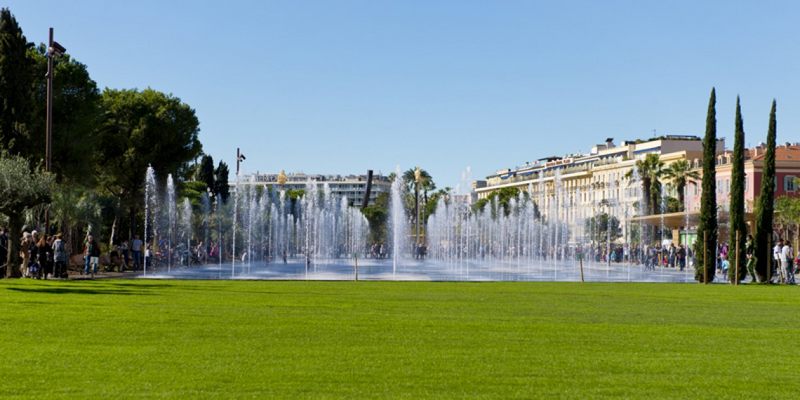
The other most beautiful part of Nice is the Promenade du Paillon, connecting the Promenade des Anglais to the National Theatre along one side the avenue des Phocéens followed by boulevard Jean-Jaurès, and on the other side the avenue de Verdun followed by avenue Félix-Faure on a length of 1.2 km. It passes by the green theater and the Albert 1st garden. Trees, shrubs and plants from all continents have come together along this walk. The Promenade invites you on an amazing botanical trip. The dream, escape and entertainment accompany walkers.
Nice has several public gardens and parks. The most famous is the Albert 1er garden. It starts from the promenade des Anglais and extends beyond the place Masséna. Meeting place and relaxation, it is a green space where retirees like to rest and tourists stroll. The special feature of this garden is that it has a stage, where many artists perform. In addition to its originality, it hosts a book festival at the end of each June. The garden is conducive to inspiration and reverie.
The Port-Lympia is the name given to the port of Nice. It serves as a mooring place for both luxury yachts and small fishing boats or gigantic freighters and transport vessels providing daily connections with Corsica. On the seafront, there are many small restaurants and charming cafes. It is nice to walk around or take your time relaxing in front of the sea.
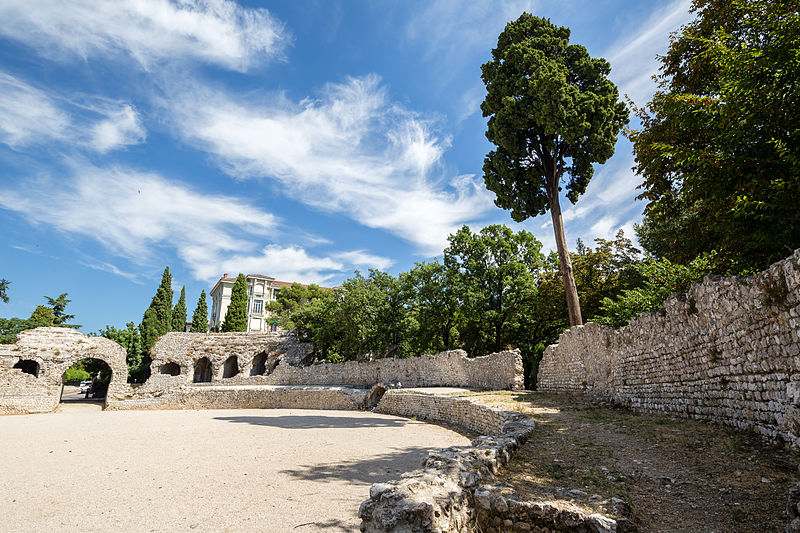
Les Arènes de Cimiez is an ancient Roman amphitheatre. With a capacity of five thousand seats, it is used for concerts and other live performances. In addition, the Arenas de Cimiez are famous for their garden: the park, a vast olive grove made up of thousands of olive trees more than 100 years old, is the ideal place for a picnic or a nice walk. Steeped in history, it is a haven of peace. Every year, traditional events take place there.
The Phoenix Floral Park, a true green setting in the heart of the city, is a zoological and botanical park. Located at the southwest entrance of the city, along the Promenade des Anglais, it houses a unique plant and floral heritage and has one of the largest greenhouses in Europe. Built around a central piece of water, it has about twenty thematic areas, centered on the different climates found on earth. The Phoenix Floral Park offers walkers a privileged space for discovery. In addition, it offers twenty or so themed gardens with sound effects and places to relax by the side of musical fountains.
Other curiosities to discover
The Tête Carrée, located at 25 Traverse Barla, is a monumental sculpture 30 m high. One of the most unusual buildings, it is habitable and houses the administrative premises of the municipal library with regional vocation (BMVR) in Nice. The sculpture consists of a 14 m cubic section on one side, housing the offices of the Louis Nucera library over seven floors, supported by the bottom of a gigantic bust. This bust is truncated at the mouth.
The Quai Rauba-Capeù, located east of the Promenade des Anglais, offers splendid and wide panoramas on the Bay of Angels. You will embrace here all the infinity of the Big Blue. The dock is equipped with bike paths and a promenade. A sundial of a dozen in diameter is engraved on the ground. You will enjoy exploring this part of Nice.
The Quai des Etats-Unis, located between the Promenade des Anglais and the Quai de Rauba-Capeù, is a beautiful walk. It offers pleasant leisure and tourist opportunities. It is located a short distance from the main tourist attractions of the east of Nice. Here, you will know the charm of Nice from the east.
The Masséna museum, 65, rue de France, is a museum housed in one of the last prestigious 19th century villas on the Promenade des Anglais. The museum traces the history of Nice from 1792 to 1939. It has a rich library of thousands of documents, including the history of the County of Nice, Provence, Savoie and northern Italy.
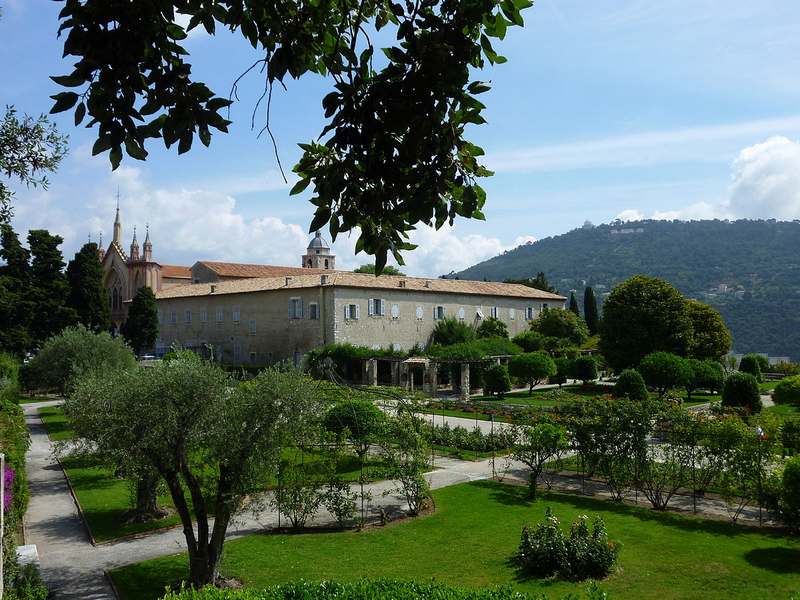
By visiting the Cimiez Monastery, located in the avenue of the Monastery-de Cimiez, you can occasionally walk through its very typical cemetery. The walk in the cemetery is as beautiful as a walk in the park. Raoul Dufy, Roger Martin du Gard and Henri Matisse rest in this place where monuments and buildings to the memory of the disappeared will surprise more than one visitor. The cemetery is full of graves that are real masterpieces while sculptures. It is a true part of the culture of Nice with its old families.
The Mont-Boron Forest Park is another curiosity to discover. Located east of Nice, on the Forest route du Mont-Boron, it offers a pleasant walk and offers an excellent vantage point of the city of Nice and the nearby bay Villefranche sur Mer. The park includes two major tourist attractions: The Château de l’Anglais (it is one of the most amazing architectural jewels in Nice) and the Lazaret Cave (it is one of the main sites that allow archaeologists to trace the history of human civilization in the region during the Middle Neolithic) are important and interesting attractions.
Fort du Mont Alban is another site to explore. It is located 2 kilometers east of Nice. It offers one of the most excellent panoramas of the Côte d’Azur. You can contemplate the whole of Nice with its splendid Baie des Anges. Nearby, a park ideal for excursions. and escape.
Built in the place of a fortified building, razed under Louis XIV, the Bellanda Tower, located at the foot of the castle hill (Old Nice), is another wonder of Nice. The terrace on which the tower, monumental and imposing, stands proudly, offers a real panoramic point. An essential place for those who want to have an exceptional, magical, breathtaking and incomparable view of the sea, the city and its surroundings. The unique and attractive venue is well worth a visit.
Visit the official website of the Nice Tourist Office:

